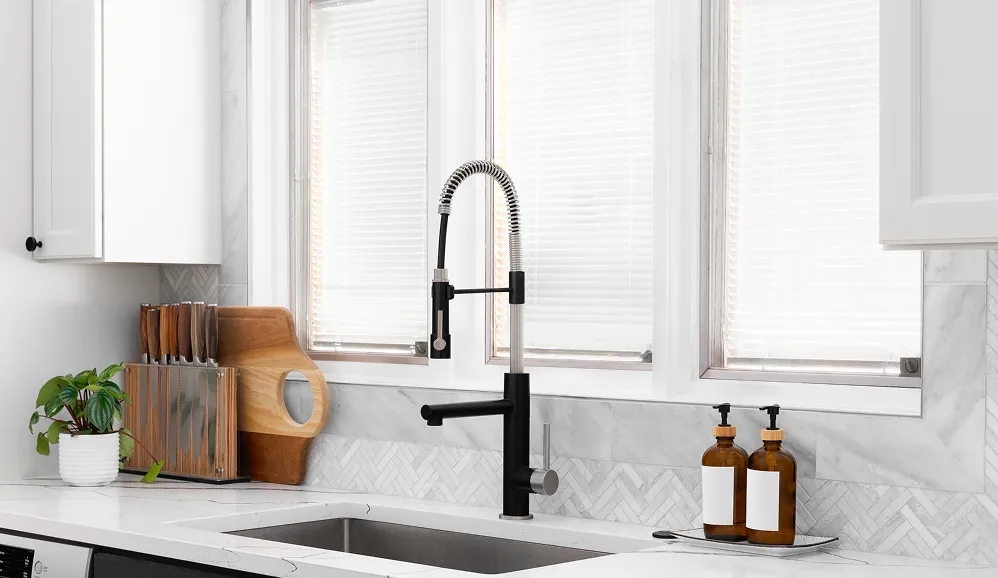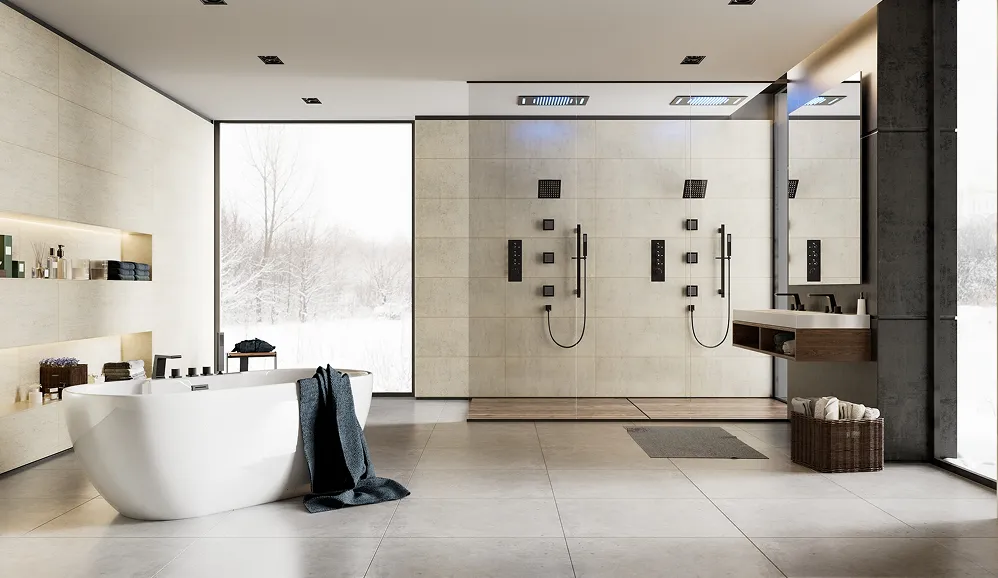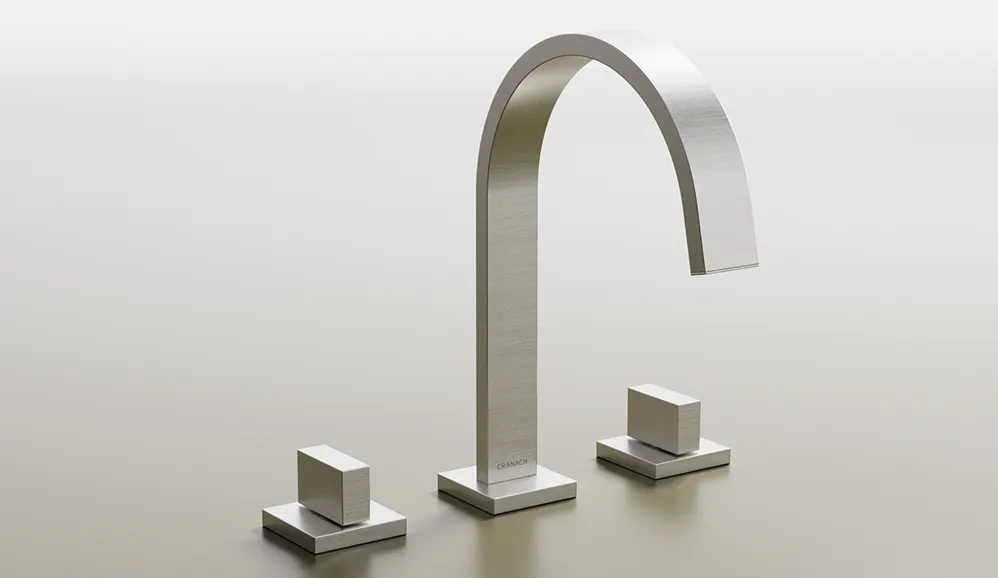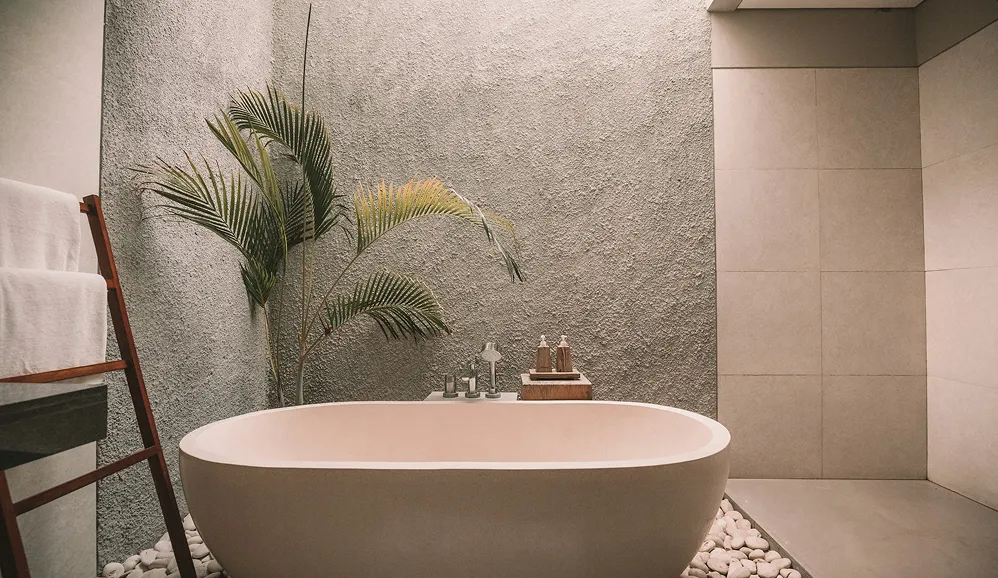You just got a new tattoo, and you’re probably wondering about that first shower. The big question is, can you shower after a tattoo? The short answer is yes, you absolutely should. But how you do it is what really counts.
This isn’t about your normal, everyday shower. It’s about being careful and keeping things clean.
The First Shower After Your Tattoo: What to Expect
Think of your new tattoo as a very sensitive, open wound—because that’s essentially what it is. The whole point of that first wash is to gently clear away any leftover plasma, blood, and ointment without irritating the skin. Get this part right, and you’re setting yourself up for a smooth healing process.
Your artist likely covered your new ink with a protective film. After a few hours (or whatever your artist recommended), you’ll remove it. Now it’s time to wash. You’ll want to use lukewarm water and a mild, fragrance-free soap. Forget about using a washcloth or loofah on it; your hands are all you need.
Master Your Shower Environment
Controlling your shower’s temperature and pressure is a game-changer here. The last thing you want is a high-pressure stream blasting your fresh ink or scalding hot water hitting that delicate skin. Modern shower systems are fantastic because they give you that precise control.
The right hardware, like quality tub and shower faucets, provides the control needed to turn your bathroom into a safe space for tattoo aftercare. This focus on wellness and design ensures both a beautiful bathroom and a perfectly healed tattoo.
For that first crucial shower, you want to be prepared. Here’s a quick checklist to make sure you have everything covered.
Your First Post-Tattoo Shower Checklist
| Action | Best Practice | Why It Matters |
|---|---|---|
| Wait the Right Amount of Time | Follow your artist’s advice (usually 2-5 hours). | Gives the skin time to begin the initial healing phase before washing. |
| Set the Water Temperature | Use lukewarm water—not hot, not cold. | Hot water can open pores and cause ink to bleed; cold water can be a shock to sensitive skin. |
| Adjust Water Pressure | Use a gentle, indirect stream of water. | A strong, direct spray can be painful and may damage the delicate, healing skin. |
| Choose the Right Soap | Use a mild, unscented, antibacterial soap. | Fragrances and harsh chemicals can severely irritate the wound and impede healing. |
| Wash Gently | Use only your clean hands in a circular motion. | Loofahs or washcloths are too abrasive and can harbor bacteria, leading to infection or scarring. |
| Rinse Thoroughly | Let the water run over it until all soap is gone. | Leftover soap residue can dry out and irritate the tattoo. |
| Pat, Don’t Rub | Gently pat the area dry with a clean paper towel. | A regular bath towel can be too rough and might leave behind lint or bacteria. |
| Apply Aftercare Lotion | Once completely dry, apply a thin layer of recommended ointment. | Keeps the area moisturized and protected, which is crucial for proper healing. |
Following these steps might feel a bit tedious, but it’s a small price to pay. Taking these precautions ensures your new artwork heals beautifully and stays vibrant for years to come.
When to Take That First Shower
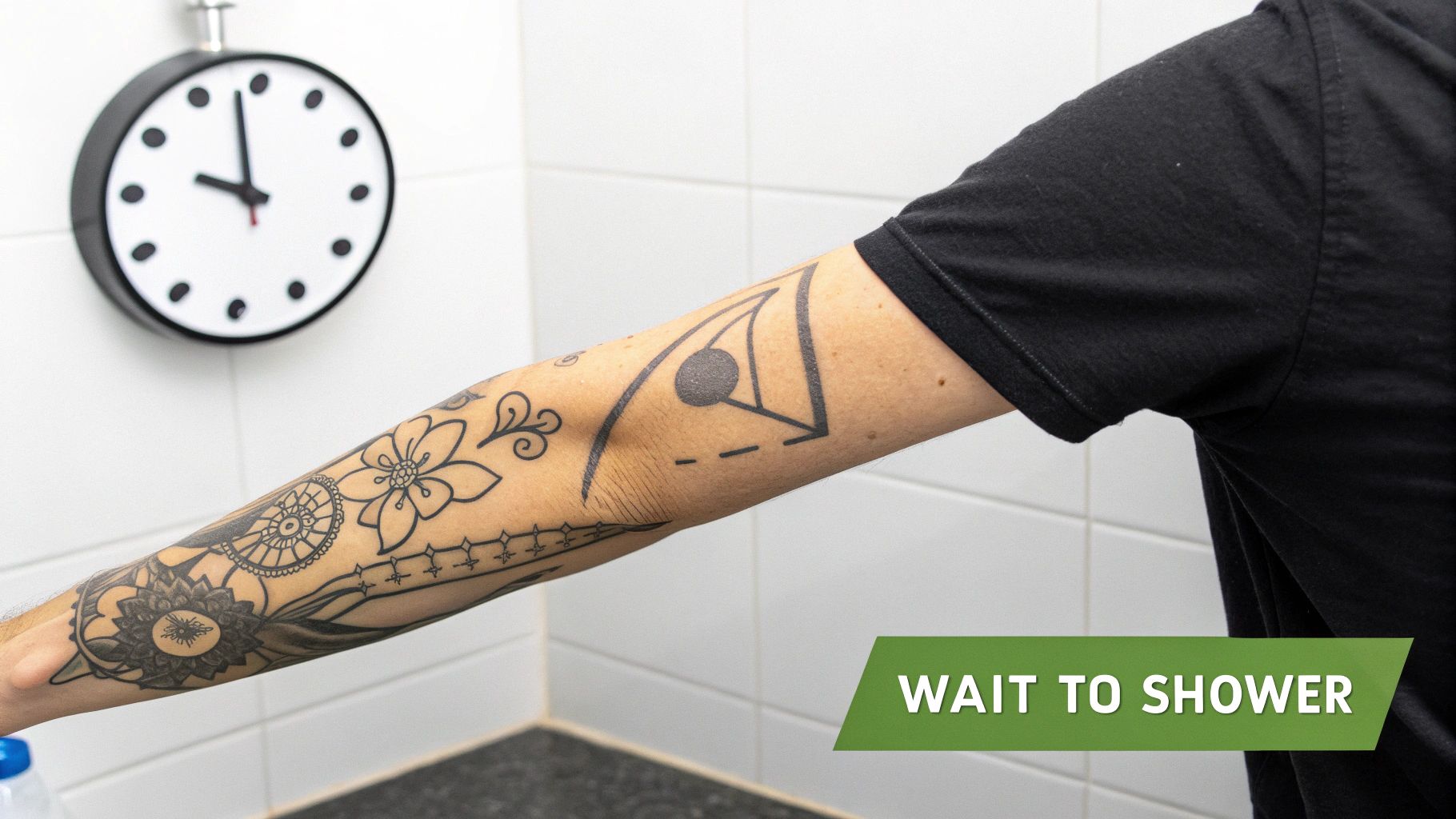
When it comes to tattoo aftercare, patience isn’t just a virtue—it’s a necessity. You might be itching to wash off the grime of the day, but the real question isn’t if you can shower, but when you should. Jumping the gun on that first wash can introduce bacteria into what is, for all intents and purposes, a fresh open wound.
Most artists will tell you to wait somewhere between 4 to 24 hours. This isn’t an arbitrary window. During these first crucial hours, your skin is in overdrive, pushing out plasma that forms a natural, protective barrier over the ink. Washing it too soon just messes with that process, which can seriously impact how your tattoo settles and heals.
Let Your Skin Do Its Thing First
The size and location of your tattoo also factor into the timeline. A tiny wrist tattoo, for example, will likely be ready for a gentle rinse much sooner than a huge, heavily-detailed back piece.
The goal is simple: give your skin enough time to start closing up. That initial seal is your body’s first line of defense against infection, and it’s critical for preventing problems like ink bleed or heavy, thick scabs.
That’s why many tattoo pros suggest waiting a full 24 hours before that first shower. It’s the safest bet, giving the ink time to set while your skin is at its most vulnerable. Sticking to this advice helps you sidestep complications like infections or losing color. If you want to dive deeper into the healing process, you can explore additional insights on tattoo healing.
Ultimately, having complete control over the water is a game-changer. High-quality tub and shower faucets and modern shower systems give you the precision needed to manage both temperature and pressure. A setup with a shower with tub spout is especially handy, letting you test the water temperature with your hand before it ever touches your new art. It’s this kind of careful approach that makes all the difference.
Your Guide to Showering With New Ink
That first shower with a new tattoo can feel a little nerve-wracking. Don’t worry, we’ve all been there. It’s totally normal to be anxious about washing your fresh ink, but the process is actually pretty simple once you know what you’re doing. Think of it less as a chore and more as a critical step in making sure that art heals beautifully.
Before you even think about turning on the faucet, get your supplies ready. You’ll need a mild, liquid, fragrance-free soap and a clean paper towel for drying. Seriously, don’t just grab your regular bar of soap or that fancy, scented body wash. They’re often packed with chemicals and fragrances that will only irritate your skin, which is the last thing you want.
The Shower Routine That Protects Your Tattoo
When it comes to the water, the one word to remember is lukewarm. Water that’s too hot can open up your pores and cause extra swelling, which might even lead to some ink loss. Before you let the water hit your tattoo, test it on another part of your body to make sure it’s comfortably warm, not hot.
Now, it’s time to wash. Use only the tips of your clean fingers—no washcloths or loofahs! Work your soap into a light lather and gently clean the tattoo with soft, circular motions. Your only goal here is to remove any dried plasma, blood, or excess ink. No scrubbing needed.
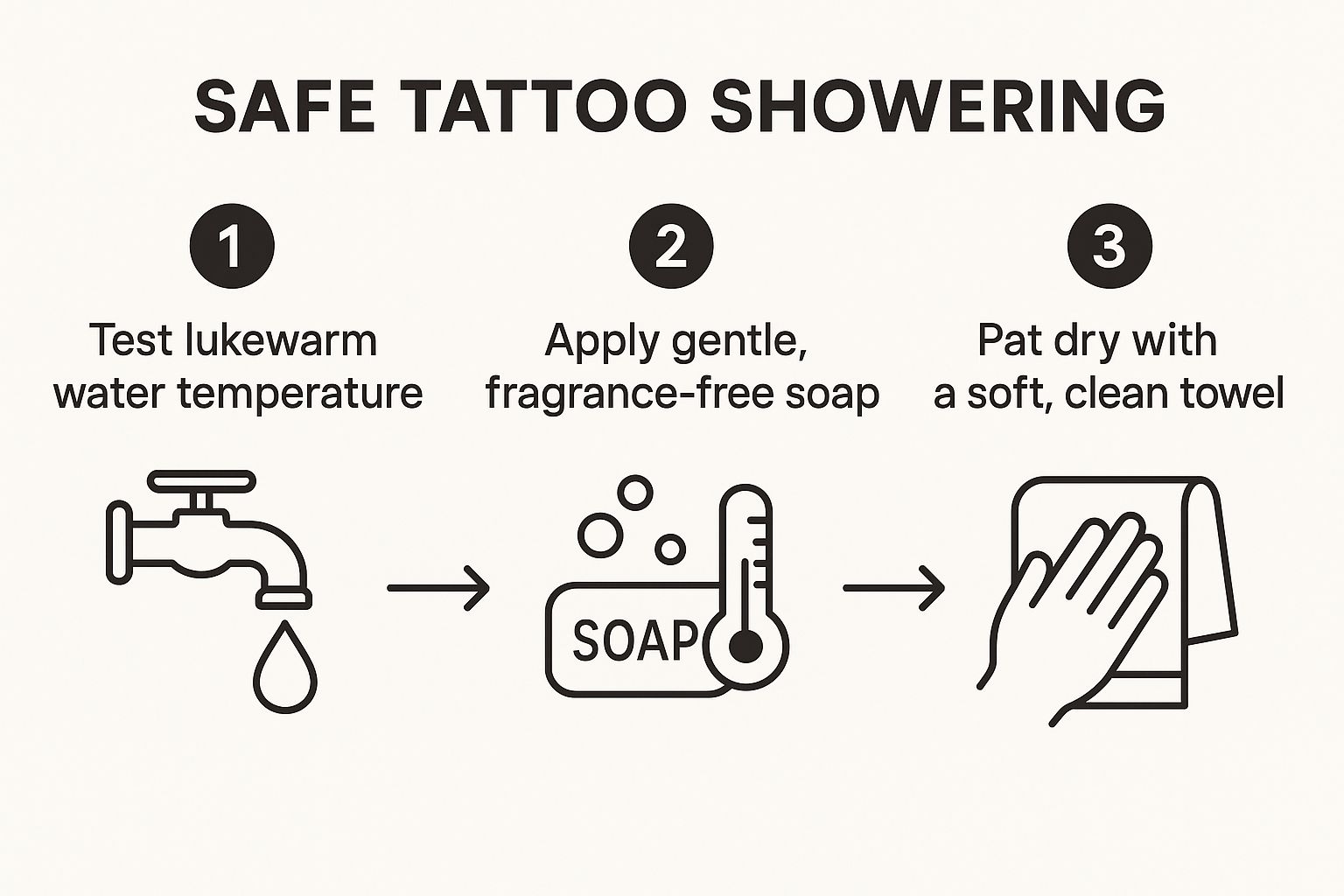
As you can see, it all comes down to being gentle. From the water temperature to the way you wash and dry, a soft touch is key.
Taking Control of Your Shower Environment
Rinsing is just as important as washing. Whatever you do, don’t let the full blast of the showerhead hit your new ink directly. That kind of high pressure can be painful and could potentially damage the healing skin. A better approach is to let the water run indirectly over the area.
A great trick for this is to use a shower system with a handheld wand. It gives you precise control, letting you rinse your body without spraying the tattoo directly. If you have a shower with tub spout, you can even use that lower-pressure stream of water to rinse the area gently.
Having that level of control makes all the difference. High-quality fixtures let you fine-tune both the temperature and the flow, turning a risky task into a simple, safe part of your day. It’s also a good idea to keep your showerhead clean to prevent bacteria from building up. If you’re not sure how, you can learn how to clean a shower head to keep your shower environment hygienic.
Finally, let’s talk about drying. Step away from your usual bath towel. It can be too rough and might be holding onto bacteria. Instead, gently pat the tattoo dry with a fresh paper towel. Just a light patting motion will do. Then, let it air-dry for a few minutes before you put on your aftercare lotion. Your tattoo will thank you for it.
Choosing the Right Shower Setup for Tattoo Care
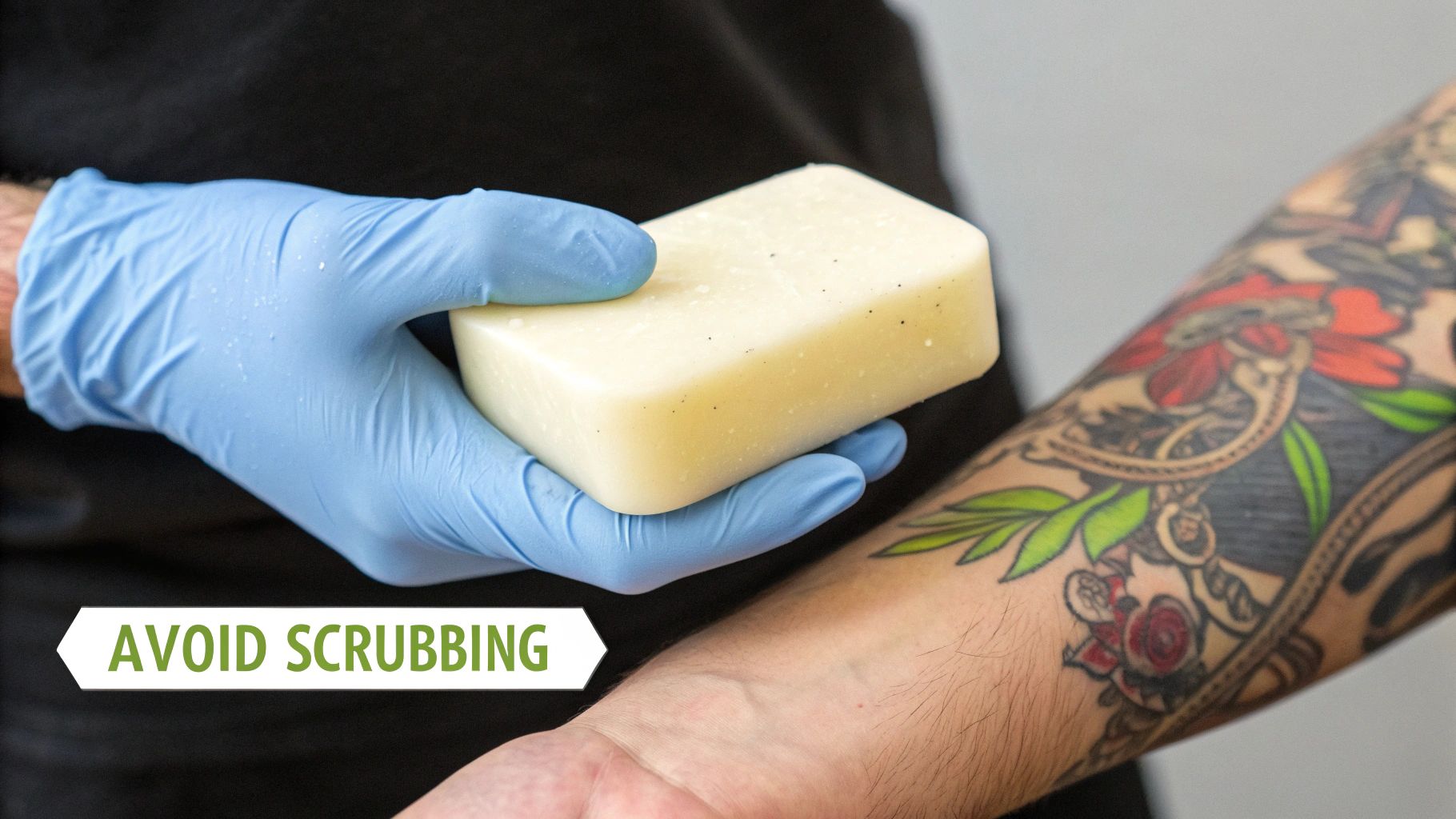
Your shower hardware can honestly be your best friend or your worst enemy during tattoo aftercare. When you get the green light for that first shower, having the right setup makes all the difference in protecting your new ink from damage. A modern setup isn’t just for looks; it’s about control and safety.
I’ve found that versatile shower systems, especially those with a handheld wand, are a total game-changer. This little feature is perfect for directing water away from your fresh tattoo while you wash the rest of your body. It minimizes unwanted splashing and keeps a high-pressure stream from hitting that super sensitive skin.
If your setup includes a shower with tub spout, you have another great tool at your disposal. You can use this lower water source to rinse your legs and feet, or even fill a cup with water to gently rinse the area around the tattoo. No direct, high-pressure spray needed.
The Importance of Precise Control
The two most critical factors when showering with new ink are water temperature and pressure. High-quality tub and shower faucets give you that pinpoint control over both, which is absolutely essential for protecting your art. This control helps you avoid accidentally blasting or scalding the healing skin.
Preventing a high-pressure spray from hitting the tattoo is non-negotiable. It can feel like a sandblaster on a fresh wound and can potentially damage the ink and scabs, leading to a poor heal.
If your shower’s pressure feels a bit too aggressive, you might want to look into how to increase water pressure in your shower—not to make it stronger, but to see if adjustments can give you better, more gentle control.
For those who are serious about their ink and plan on getting more, creating the right environment is key. Considering professional bathroom design services can help you tailor your shower space specifically for hygiene and ease of use. A well-designed shower can make the healing process for all your future tattoos so much smoother and safer.
Common Showering Mistakes That Can Ruin a Tattoo
Knowing the right way to shower with a new tattoo is one thing, but knowing what not to do? That’s just as critical. I’ve seen it happen too many times: someone invests time and money into a beautiful piece of art, only to sabotage it with a few simple, well-intentioned mistakes in the shower. A little carelessness can lead to faded color, blurry lines, or even a nasty infection. Your new ink is an investment—protect it.
Heat, Pressure, and Product Problems
The single most common mistake? Turning your shower into a personal sauna. I get it, long, hot showers feel incredible, but they are an absolute nightmare for a healing tattoo. The combination of intense heat and steam opens up your skin’s pores, which can literally cause the fresh ink to leach out. It also softens up any protective scabs way too soon, causing them to fall off before the skin underneath is ready.
Another huge pitfall is grabbing the wrong soap. Harsh, heavily-scented body washes or those old-school antibacterial bar soaps are often packed with irritants. These can easily inflame your already-sensitive skin, leading to frustrating redness and a much longer healing process. Always, always stick with a mild, fragrance-free liquid soap.
It’s not just what you use, but how you use it. Please, never scrub your new tattoo with a loofah, sponge, or washcloth. These tools are far too abrasive for healing skin, not to mention they can be breeding grounds for bacteria. Scrubbing can tear off scabs and pull the ink right out along with them. Your clean fingertips and a gentle touch are the only tools you need.
Letting a high-pressure shower stream beat directly onto your new tattoo is a recipe for disaster. This can be painful and physically damage the delicate new layers of skin, potentially causing patchiness in the final result.
This is one of those times when your bathroom hardware really matters. A modern shower system or a versatile shower with tub spout offers much better control. Quality tub and shower faucets are designed to let you easily manage both the temperature and the pressure, minimizing the risk to your ink.
And remember, keep it brief. A quick, efficient shower not only protects your tattoo but also conserves a surprising amount of water. If you’re curious about your own usage, you can see our breakdown of how many gallons of water a shower uses. By sidestepping these common mistakes, you’re giving your new artwork the best possible shot at healing perfectly.
Your Tattoo Showering Questions Answered
Even with a solid game plan, you’re bound to have questions when you’re nursing fresh ink. It’s totally normal to feel a little hesitant. To clear the air, we’ve tackled some of the most common questions people have about showering after getting a tattoo. Think of this as your go-to guide for those “is this normal?” moments.
Waterproof Bandages and Showering
One of the biggest questions we hear is about waterproof bandages. Can you use them? Yes, absolutely—and they work incredibly well. These specialized “second skin” bandages are often applied by your artist right after your session. They create a fantastic protective barrier that seals your new tattoo from water and germs while still letting your skin breathe.
You can usually keep these on for several days, which takes a lot of the stress out of showering. But you have to follow your artist’s specific instructions for how long to leave it on and how to take it off. Even with one of these bandages, you should still avoid taking a bath and completely submerging your tattoo.
Spotting Trouble After a Shower
So, how can you tell if you’ve gone too far in the shower? The most obvious sign of over-soaking is when the skin around your tattoo looks “pruny” or wrinkled, just like when you’ve been in a pool too long. That’s a clear signal you’ve had it under the water for too much time.
The other major red flag is if your scabs get all mushy or, even worse, fall off before they’re ready. This can literally pull the ink right out of your skin.
Keep an eye out for other warning signs, too:
- Redness that gets worse or starts to spread.
- A stinging or burning feeling that just won’t quit.
- Swelling or puffiness that seems unusual.
- Any kind of pus or colored discharge—this is a big one.
If you spot any of these more serious symptoms, don’t wait. Call your tattoo artist or a doctor right away. It’s good to remember that some light peeling and flaking is perfectly normal; that’s just part of the healing process.
How Long to Be Careful
This whole careful showering routine isn’t forever, but it’s crucial for the first couple of weeks. You’ll want to stick with this gentle approach for at least two to three weeks. Basically, keep it up until your tattoo has completely finished its main peeling and scabbing phase.
Even after the surface looks healed, the deeper layers of your skin are still recovering. It’s a good idea to keep avoiding high-pressure water streams and harsh scrubbing on the tattooed area for a few more weeks to ensure its long-term vibrancy and sharpness.
Taking these steps ensures your art looks its best for years. And remember, a calm, controlled shower can do more than just get you clean; for some, it’s a moment of peace. You can read more on how a shower can actually help with anxiety in our related article.
At Cranach, we believe that the right fixtures turn your bathroom into a space that supports your health and well-being. A versatile setup with a shower with tub spout or high-quality tub and shower faucets gives you the control needed for delicate tasks like tattoo aftercare. Explore our shower systems to find the perfect solution for your home.


